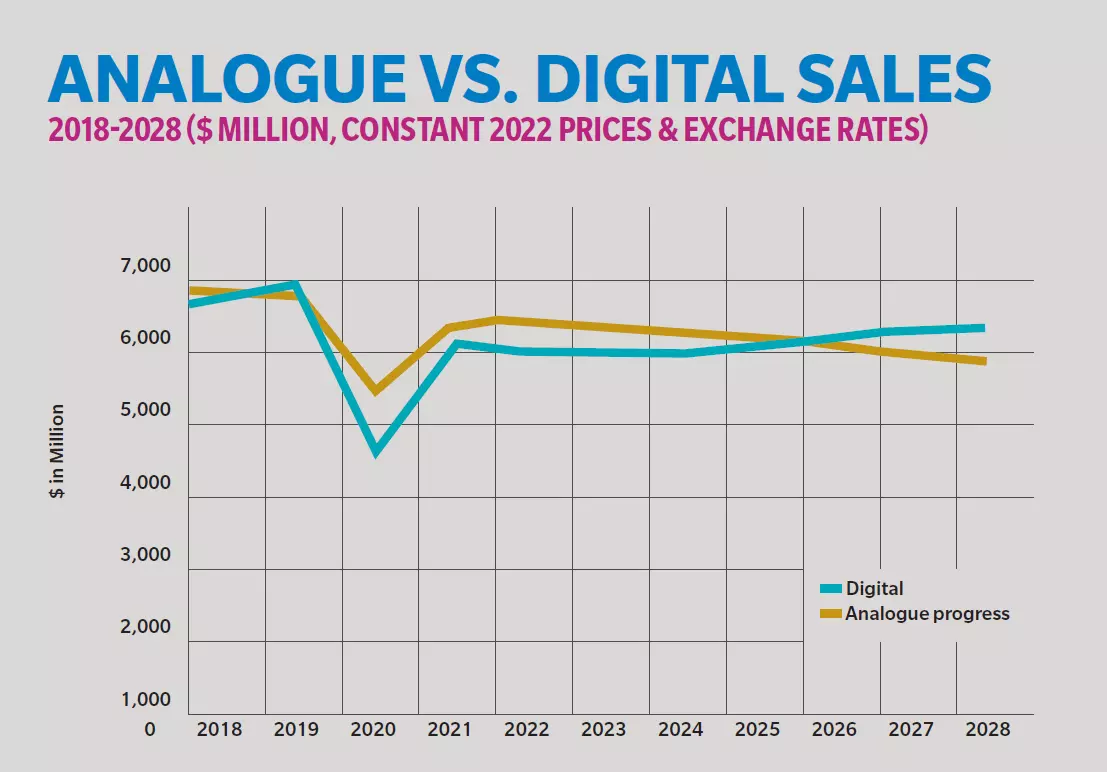The digital transformation in commercial printing and packaging continues apace. It is set against a growth backdrop that expects digital printing equipment sales to overtake analogue for the first time in less than three years.

According to Smithers’ The Future of Global Print Equipment Markets to 2028 inkjet and toner digital printer equipment sales are predicted to move ahead of analogue by 2026. In 2022, digital presses accounted for almost a third of printing equipment, with a value of $5.5 billion. By the end of the forecast period, this growth will hit $5.9 billion.
Smithers points to demand driving trends that will see more jobs move away from offset. These include improvements in speed and quality, the need for greater personalization, variable data printing, and shorter run commissions. Operations will also be attracted to investing in cutting-edge, eco-friendly on-demand printer technology that has fewer manual processes, greater automation, and reduced material waste.
Accelerated by the pandemic, the innovation and progress made by digital printing and packaging technology and its continued mainstream adoption by the commercial printing industry, will be among the many shaping trends and topics explored in depth at drupa. Others are likely to include:

- Deforestation-free products regulation of the European Union aimed at reducing greenhouse gas emissions and biodiversity loss. It is part of a broader plan of action to tackle deforestation and forest degradation first outlined in the 2019 Commission Communication on Stepping up EU Action to Protect and Restore the World’s Forests. Introduced at the end of June 2023, it includes wood (timber) and paper made from it. Operators/traders have 18 months to comply.
- Programmatic printing that integrates software, hardware, and data to streamline and optimize printing processes and provide a measurable element of the marketing mix. It has the potential to transform the printing industry by delivering proven ROI. Interest is growing in its ability to combine the emotional impact of individualized print with the immediacy of digital marketing.
- A lack of commercial printing skilled labour following the pandemic which prompted a significant number of experienced printing employees to retire early. Also adding to skilled labour shortages is the desire for more employees to work from home. We expect this to be addressed with greater commitment and funding for attractive training programmes, continuous staff development, as well as accommodating a work-life balance. Hiring and training young talent could also reap rewards as we discussed here.
- Industry 5.0 and the emerging phase of industrialization where humans work alongside advanced technology and artificial intelligence-powered robots to enhance workplace processes. This will bring the human-centricity back into Industry 4.0, as well as increased resilience combined with an improved focus on sustainability.
All these trends are expected to impact how the industry will evolve over the next 12 months.



